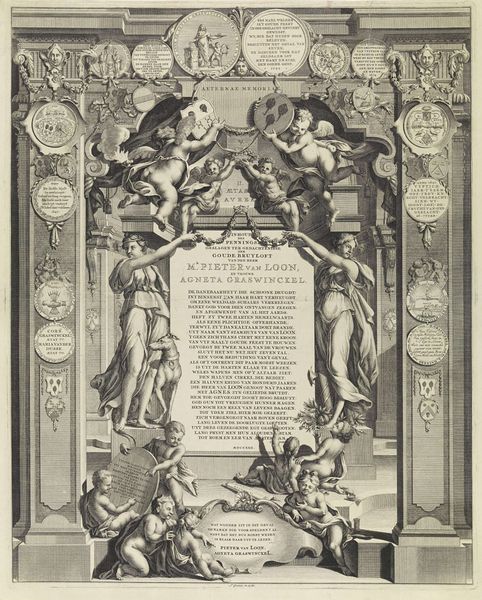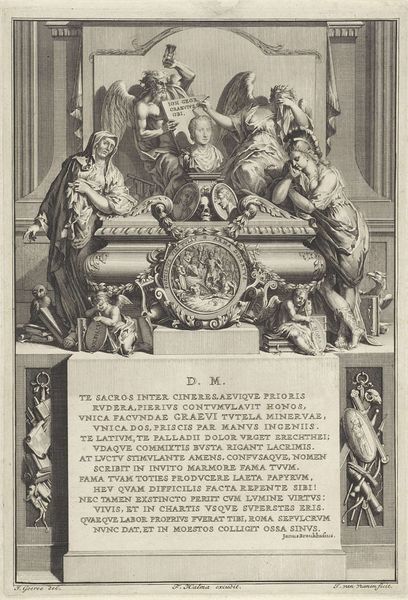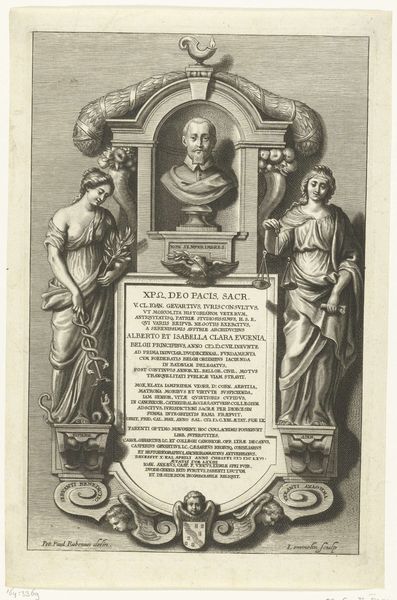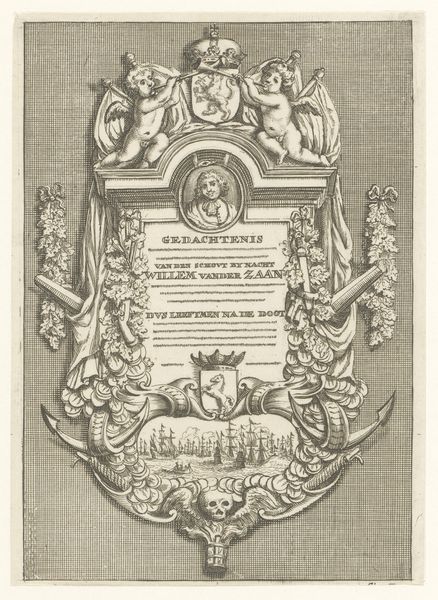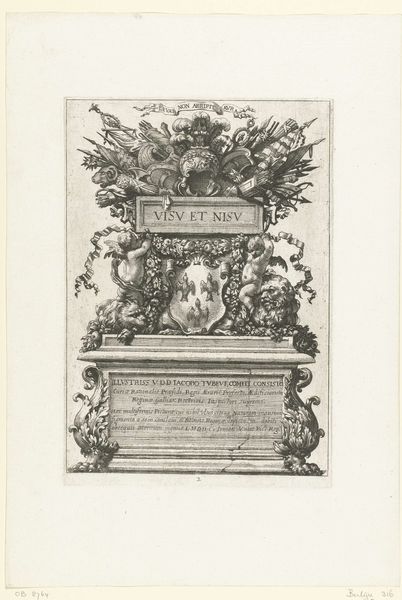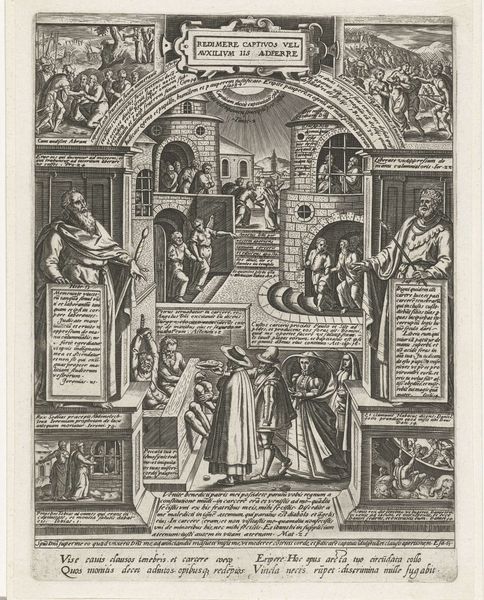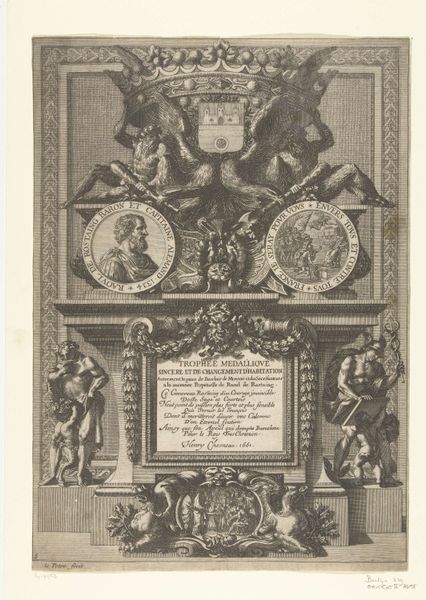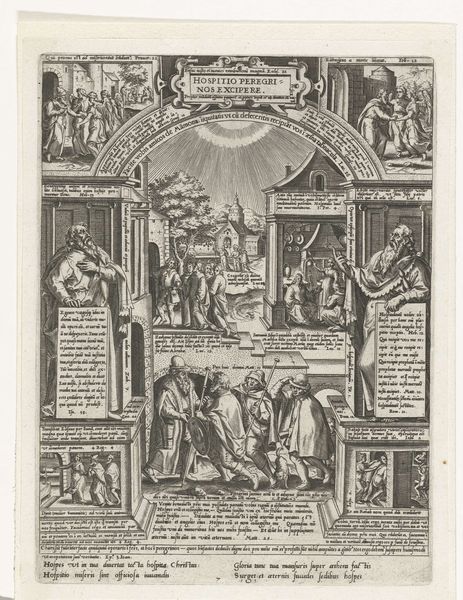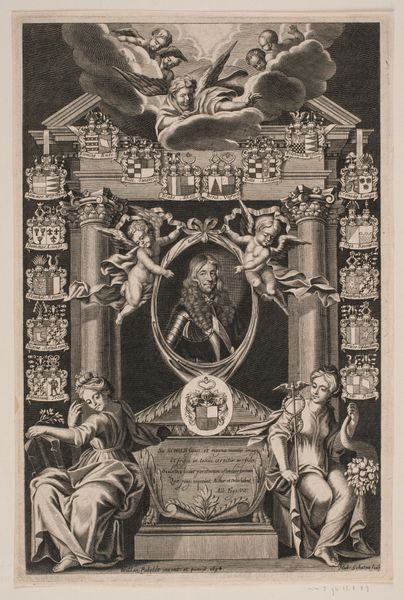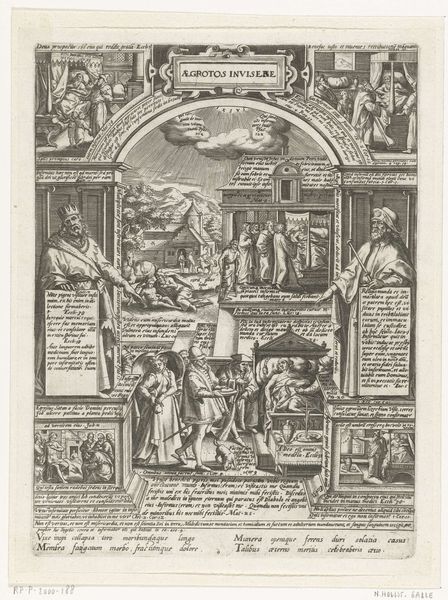
Dimensions: height 583 mm, width 420 mm
Copyright: Rijks Museum: Open Domain
Curator: The immediate feeling I get from this engraving is one of profound law and order, but also...of theatricality. The sheer detail feels overwhelming. Editor: Indeed! This piece, currently held at the Rijksmuseum, is Hendrick Goltzius's "Moses with the Tablets of the Law", dating back to 1583. It's an engraving, which is fascinating when we consider the printing process. Imagine the precision and labor involved in carving those intricate lines into the metal plate! Curator: Those horns on Moses, emanating beams of light, feel loaded with cultural baggage! It's a direct link to the Vulgate Bible's mistranslation of Exodus, giving us this iconic, albeit inaccurate, image. Editor: Absolutely. And those inscriptions, so meticulously rendered… Dutch, isn’t it? Each stroke conveys the weight of religious doctrine translated through labor. It makes me wonder about the intended audience and how this print functioned in their lives, especially given its relatively accessible format. Curator: Beyond its textual and theological implications, consider how the visual choices, the architecture surrounding Moses and the tablets, reframe the Law. It elevates it into something classical, almost architectural in significance, echoing a blend of religious and humanistic traditions. Editor: Right. This wasn't just a devotional image. The material form – the printed engraving distributed for instruction and meditation. I can picture someone meticulously colouring in certain elements... altering it, making it their own... Curator: That speaks to the complex interplay between producer and consumer. The engraving’s symbolic weight is amplified through the artist’s skill in the precise and reproductive methods of its time, further shaping societal understanding. It invites contemplation about how meaning is both embedded and received. Editor: It seems what initially appeared theatrical can now also be viewed as profound within its cultural and historical time. I appreciate this work for revealing so much through symbolic cues from a period where we now understand cultural production was so deeply embedded in religious meaning. Curator: Yes, the artistic process reveals so much when linked with historical context, expanding not just the artistic merit but enriching our knowledge and perception of how production shapes reception.
Comments
No comments
Be the first to comment and join the conversation on the ultimate creative platform.
